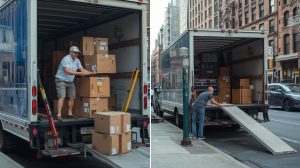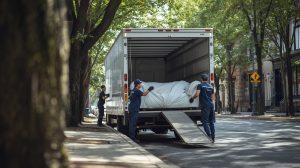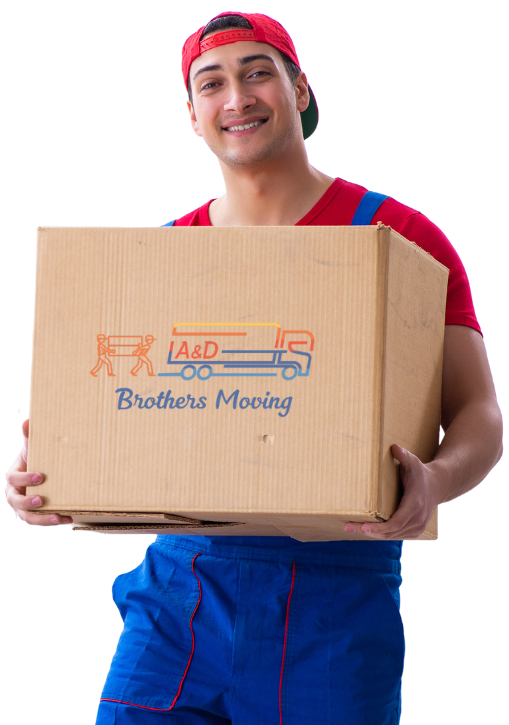Moving can be very exciting, but there are risks to it. Whether you’re moving around town or down the road to a new state, safety is something that should be a top priority. From lifting heavy things to getting lost in an unfamiliar neighborhood, moving can be very physically, emotionally, and logistically challenging. In this guide we’ll look at how to stay safe during a move — practical tips and proven safe-moving strategies to help you, your belongings, and your family stay safe while you’re A&D Brothers Moving Company.
Plan Ahead to Avoid Common Moving Hazards
Preparation is the foundation of the safest moving experience. Having a clear plan of things to do throughout the process sets you up to be less stressed and avoid any rush. Make note of any items that will need special handling, such as fragile antiques and heavy furniture. Label every box, especially boxes containing dangerous materials or breakables.
Buy the right moving supplies, like gloves, back braces, dolly carts, and anti-slip shoes to reduce the risk of injury. Book professional movers if you’re not looking to move by yourself. Have kids or pets involved in the move, and make sure they are in a designated safe area away from all activity. Organizing your belongings in advance also minimizes the likelihood of an injury or damage, or expensive mistake, on moving day.
Use Proper Lifting Techniques to Avoid Injuries
Lifting is one of the most dangerous movements you can do. If you lift the wrong way, you can strain your back and have muscular traction or even more serious injuries like herniated discs. When lifting, always bend at the knees and not at the waist. Your back should remain straight and you should use your legs to push the weight up. Keep the heavy items very close to your body to stay balanced. Use your feet to pivot (switch) your body while carrying objects. This can cause an unexpected strain on your knees or hips. Take frequent breaks if you have more than one object to move. Drink lots of water to keep your muscles hydrated. Elevate heavy furniture with a partner. or use equipment like furniture sliders and hand trucks to reduce strain.
Gloves to protect your hands from sharp edges and splinters Shoes that cushion your feet with closed toes and anti slip soles Never try to carry more than you can carry, if something feels heavy it probably is and you should ask for help or hire professionals that have the equipment and training to handle heavier loads safely. Smart lifting techniques not only protect your body, but also make your moving day go by smoothly and with no injuries.
Protect Your Valuables and Sensitive Items
Secure your valuables and personal items during the process of moving. Keep important papers, electronics, and other non-essential items with you during the move rather than putting them in a moving truck. Store valuable material in a locked, waterproof container for such items as passports, medical records, jewelry, and laptop computers. Backup computer and mobile phone data in case there is data loss or theft. Label your boxes easily. Don’t advertise your boxes for expensive items. Look into short-term moving insurance to ensure you’re not personally responsible for something that happens during the process.
Stay Safe While Driving the Moving Truck
If you’re driving a rental truck, safety is even more important. Moving trucks are bigger and heavy than standard cars — thus, longer braking distances and wider turns. Before you start driving, make sure all mirrors are closed so you’re seen at all times, and familiarize yourself with the controls. Drive slowly and with caution—especially in residential neighborhoods or narrow streets.
Avoid sudden braking, and take corners wide to avoid hitting curbs / parked cars. Don’t go overboard in narrow areas like bridges / parking garages. If you’re not feeling confident behind the wheel, ask someone with experience if they can help or consider hiring a licensed driver.
Get an emergency kit, water, and snacks in the truck in case you get stuck. Plan ahead and go out of your way to avoid high traffic areas if possible. Take regular breaks every three or four hours or so so you stay in high spirits and awake. With a little planning and defensive driving skills you’ll reduce the risk of a vehicle crash and have your things arrive at their new home safely.
Maintain Personal Safety and Awareness
Being safe is just as important for you as weighing down your stuff. Have an alert mind on moving day. Clear away boxes and cords to make it easy to avoid tripping. Make sure there’s proper lighting, especially if it’s dark and you’re moving through stairwells. Wear clothes that aren’t tight or will get in the way of moving. Once you hire movers you’ll want to do your homework on them. Look for licensed, insured companies that have reviews you can trust. Don’t share your move plans with the world on social media until you’ve moved into your new home.
Keep your phone charged and the numbers for emergency services on hand. Have a first aid kit nearby in case something goes wrong with a minor injury, such as a cut or a bruise. Don’t lift or climb ladders if you’re feeling tired or dizzy. Trust your gut—if something seems dangerous, stop and check. Because on long-distance moves, secure your place with locks and check for neighborhood safety before unloading. Safety is more than not causing injury or death — it’s about being in control of your situation throughout the move.
Prepare for Unexpected Weather Conditions
Weather is always unpredictable on a long distance move. Rain, snow, or extreme heat can shortchange any plans you have and make things unsafe for you. Check the weather forecasts for both your current and destination locations and make plans accordingly. If the forecast indicates bad weather you may want to reschedule or change your route so you avoid the worst of the weather. Consider covering all your items with waterproof covers and plastic wrap (for furniture and boxes). Make a slicker path for entryways with old rugs or tarps, and clean all entrances of mud or ice. Carry umbrellas, ponchos and extra towels in case of bad weather.
I have a few general tips: In hot weather drink plenty of water and wear light clothing so you don’t overheat and not get heat burned. And for winter wear layers and hand warmers, I also carry extra clothes and a change of shoes just in case. Weather can be a common issue with moves, but with some foresight and preparation you can keep yourself, your crew, and your belongings safe—and dry—no matter what the weather throws at you.
Communicate Clearly With Everyone Involved
Clear communication helps prevent confusion, accidents, and stress on the moving day. Before you leave, outline the plan to your entire moving party—whether it’s family, friends, or moving contractors. Deliver each person their specific roles. Explain safe practices like lifting large boxes or using equipment. Turn on your phone and be on top of any issues right away if anything goes awry (if it happens) at the last minute. Check the date/times of any movers they used to deliver/package or call them to confirm. Make sure someone is supervising kids/pets, or else that could get them into trouble or hurt.
Create a checklist or visual map to help coordinate tasks. During the move, stay calm and speak respectfully. Miscommunication often leads to dropped items or overlooked details. Regular check-ins during the move will ensure everyone stays on track and in sync. But if everybody ‘s on the same page and working for the same end – safety and efficiency – then it ‘s much smoother and quicker and much less stressful.
FAQs: Staying Safe During a Move
Q: What’s the most common moving injury?
A: The most common injury is back strain from improper lifting. When lifting heavy things try to lift with your legs and request assistance.
Q: Should I hire professional movers for safety?
A: Yes, professionals are trained to work with heavy / awkward / delicate items in a safe manner. Also reduce the risk of personal injury.
Q: How can I protect my valuables during a move?
A: Pack only essential things like jewelry, documents and electronics. Put them in secure containers, and never label anything with a tag.
Q: What safety gear should I use?
A: gloves, closed toe shoes, back braces and hand trucks are all important for a safe move.
Q: How can I keep kids safe on moving day?
A ) Have them in a particular room ( or carretera ) and keep them away from the stairs and boxes and movers to avoid tripping.





